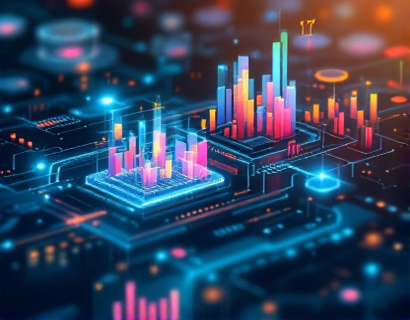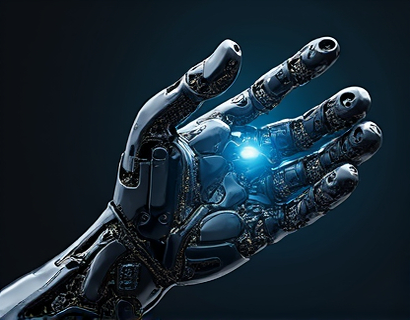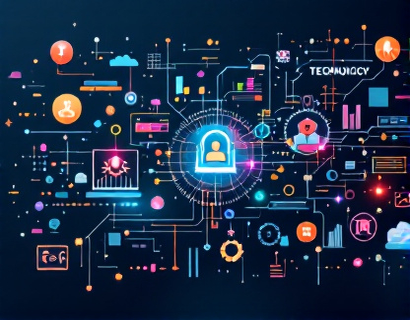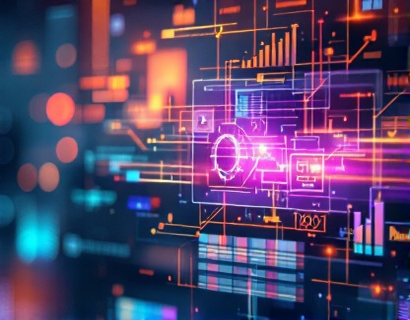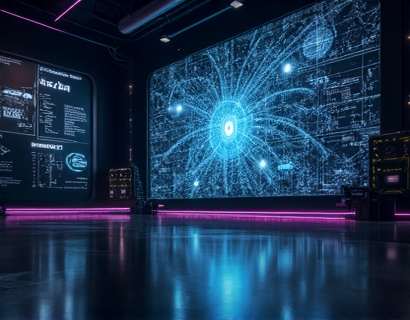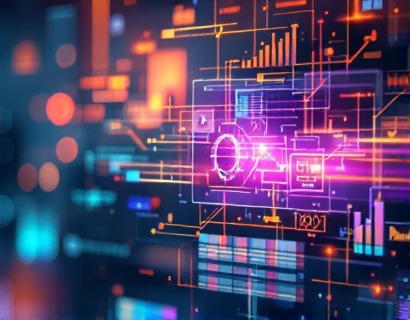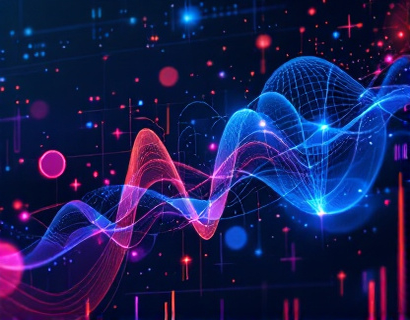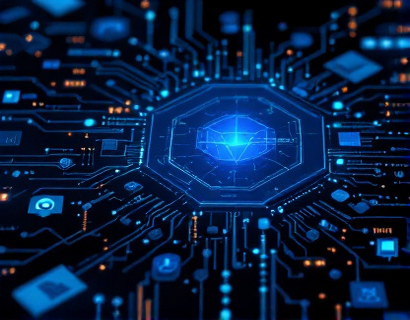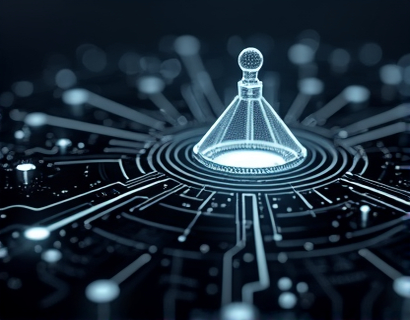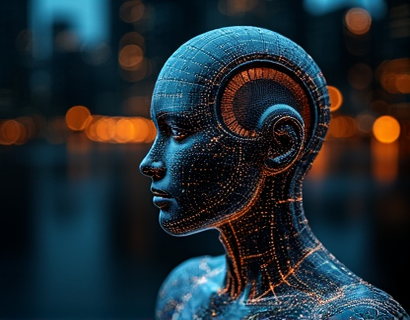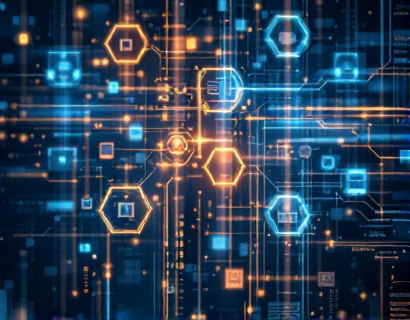Revolutionizing Digital Experiences: The Synergy of Crypto and AI
The intersection of cryptocurrency and artificial intelligence (AI) is giving rise to a new era of digital experiences, characterized by enhanced user engagement and innovative solutions. This fusion is not just a technological curiosity but a transformative force that is reshaping how we interact with apps and services online. As we delve into the latest advancements in this field, it becomes clear that the combination of blockchain technology and AI is paving the way for next-generation digital experiences that are more secure, personalized, and efficient.
Understanding the Basics: Crypto and AI
To fully appreciate the impact of this synergy, it's essential to understand the fundamental concepts of both cryptocurrency and AI. Cryptocurrency, often referred to as digital or virtual currency, operates on a decentralized network known as a blockchain. This technology ensures transparency, security, and immutability, making it an ideal foundation for various applications beyond just financial transactions. On the other hand, AI involves the simulation of human intelligence processes by machines, particularly computer systems. These processes include learning (the acquisition of information and rules for using it), reasoning (using rules to reach approximate or definite conclusions), and self-correction.
The Emergence of Crypto and AI Integration
The integration of crypto and AI is a relatively recent development, but it has gained significant traction due to the complementary nature of these technologies. Crypto provides a secure and decentralized infrastructure, while AI brings intelligence and adaptability to digital systems. This combination is leading to the creation of applications that are not only more secure but also capable of learning from user interactions to provide personalized experiences. For instance, AI-driven chatbots powered by blockchain can ensure that user data is securely stored and managed, while also offering tailored responses based on user behavior and preferences.
Enhanced Security Through Crypto and AI
One of the most significant benefits of combining crypto and AI is the enhancement of security measures in digital interactions. Traditional systems often rely on centralized databases, making them vulnerable to hacking and data breaches. By leveraging blockchain technology, sensitive information can be stored in a decentralized manner, reducing the risk of single points of failure. AI can further bolster security by detecting and mitigating threats in real-time. Machine learning algorithms can analyze patterns and identify anomalies, allowing for proactive measures to be taken against potential security breaches. This dual approach ensures that user data remains protected and that transactions are secure.
Personalized User Experiences
The integration of AI with crypto enables the creation of highly personalized digital experiences. AI algorithms can process vast amounts of data to understand user preferences and behaviors, allowing for tailored recommendations and interactions. In the context of cryptocurrency, this means that users can enjoy customized wallet interfaces, investment advice, and even personalized cryptographic keys. For example, an AI-powered wallet could suggest optimal times for transactions based on market trends, or provide insights into the most secure storage solutions for digital assets. This level of personalization not only enhances user satisfaction but also increases the adoption and utility of crypto-based services.
Decentralized Applications (DApps)
Decentralized Applications, or DApps, are a prime example of the synergy between crypto and AI. These applications run on a blockchain network and are governed by smart contracts, which are self-executing contracts with the terms directly written into code. AI can enhance DApps by providing intelligent automation and decision-making capabilities. For instance, an AI-driven DApp could manage decentralized finance (DeFi) protocols, optimizing lending and borrowing processes based on real-time data and user behavior. This not only improves efficiency but also reduces the need for intermediaries, lowering costs and increasing accessibility.
Smart Contracts and AI Optimization
Smart contracts, a cornerstone of blockchain technology, can be further optimized with AI. Traditional smart contracts follow predefined rules without the ability to adapt to changing conditions. By integrating AI, these contracts can become more dynamic and responsive. For example, an AI-enhanced smart contract could adjust its parameters based on market conditions, user feedback, or other external factors. This adaptability ensures that the contract remains fair and effective, even in complex and rapidly changing environments. The combination of immutable records and intelligent adjustments creates a robust framework for trust and reliability in digital transactions.
Supply Chain Transparency and Efficiency
The supply chain industry stands to benefit greatly from the fusion of crypto and AI. Blockchain technology can provide a transparent and immutable record of transactions, ensuring that each step in the supply chain is traceable and verifiable. AI can enhance this by analyzing data to predict demand, optimize inventory levels, and identify bottlenecks. For instance, an AI system could monitor real-time data from sensors on products and supply chain nodes, using this information to adjust logistics and inventory management. When combined with cryptocurrency, this system can facilitate seamless and secure payments between parties, eliminating the need for intermediaries and reducing transaction costs.
Healthcare Innovations
In the healthcare sector, the combination of crypto and AI is leading to innovative solutions that improve patient care and data management. Blockchain can ensure the secure and private sharing of medical records, while AI can analyze vast amounts of health data to provide insights and predictions. For example, an AI-powered platform could use blockchain to securely share patient data among healthcare providers, ensuring that each provider has access to the most up-to-date and accurate information. AI algorithms can also predict disease outbreaks, personalize treatment plans, and even assist in drug discovery by analyzing complex biological data. This integration not only enhances patient outcomes but also streamlines healthcare operations.
Financial Services Revolution
The financial industry is at the forefront of adopting crypto and AI technologies, leading to a revolution in how financial services are delivered. Cryptocurrencies offer a decentralized and transparent way to conduct transactions, while AI can provide advanced analytics and automated trading solutions. AI-driven trading bots can analyze market data and make informed decisions, helping users maximize their returns. Additionally, AI can enhance customer service in financial institutions by powering intelligent chatbots that can handle a wide range of inquiries and transactions. The use of stablecoins, which are cryptocurrencies pegged to stable assets, can further stabilize transactions and reduce volatility, making crypto more accessible and reliable for everyday use.
Challenges and Considerations
While the potential of crypto and AI integration is vast, there are several challenges and considerations that must be addressed. One of the primary concerns is regulatory compliance. The decentralized nature of crypto and the innovative use of AI can complicate regulatory frameworks, which are often designed for traditional systems. Ensuring that these technologies comply with existing laws and regulations while also advocating for new frameworks that support innovation is crucial. Another challenge is the technical complexity involved in integrating these technologies. Developers and organizations need to have a deep understanding of both crypto and AI to create effective and secure solutions. Additionally, there is the issue of user education, as many individuals are still unfamiliar with these technologies and may be hesitant to adopt them.
Future Prospects
Looking ahead, the future of crypto and AI integration is promising. As technology continues to advance, we can expect even more sophisticated and seamless integrations. The development of quantum computing, for instance, could revolutionize both crypto and AI, offering unprecedented processing power and new ways to secure and analyze data. The rise of Web3, a decentralized internet powered by blockchain, AI, and other emerging technologies, is poised to redefine the digital landscape. In this new era, users will have greater control over their data and digital identities, and applications will be more intuitive and secure. The potential for cross-industry collaboration is also significant, with sectors like finance, healthcare, supply chain, and more benefiting from the synergy of crypto and AI.
In conclusion, the fusion of cryptocurrency and artificial intelligence is not just a technological trend but a transformative force that is reshaping digital experiences. By enhancing security, personalizing user interactions, and optimizing processes, this synergy is paving the way for a more efficient, secure, and user-centric digital world. As we continue to explore and develop these technologies, the possibilities for innovation and improvement are endless.





